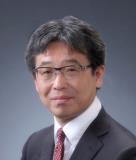
The 5th International Conference on Agricultural and Biological Sciences (ABS 2019)
July 21st-24th, 2019, Macau, China

 |
Prof. Dr. Jianbing Yan Professor of Plant Genetics in the College of Plant Science and Technology/National Key Laboratory of Crop Genetic Improvement, Huazhong Agricultural University, Wuhan, Hubei Province, China Home page: www.maizego.org |
|
Honors: Ø "Ten Thousand People Plan" Scientific and Technological Innovation Leaders, 2017 (“万人计划”科技创新领军人才) Ø Yangtze River Scholars Distinguished Professor, 2016 (教育部“长江学者”) Ø China National Funds for Distinguished Young Scientists, 2015 (国家自然科学基金委“杰青”) Ø Dupont Young Professor Award 2011 Ø Japan International Award for Yong Agricultural Researchers 2010 Biography: Dr. Yan received his B.S. in 1999 and Ph. D in 2003 from Huazhong Agricultural University (HZAU). 2003-2006, he worked in China Agricultural University as lecture, associate professor. From 2006-2008, he did his post doctorate research in International Maize and Wheat Improvement Center (CIMMYT) and Cornell University. From 2009 to 2011, he worked in CIMMYT as an associate scientist and scientist. 2011-now, he works in HZAU as a professor. His research interests focus on: Maize Genomics and the Genetic Improvement of Quality Traits based on big data and Single Cell Sequencing Technology Development and Application in Plants. Till data, he published more than 100 papers in international journals including of Nature Genetics, Nature Communications, PNAS, PLoS Genet, Plant Cell, New Phytologsit, Molecular Plant and so on. Speech Title: The development and application of single cell sequencing technology in maize Abstract: Single cell sequencing technology emerged recently, enabling high-throughput analyses of the cell lineage trees of higher organisms. In plants, single-cell sequencing is still challenging because the cell wall hinders the isolation and lysis of the nuclear contents. Recently, we have developed the methods to isolate and sequence the whole genome of each of the four microspores from a tetrad, three nuclei from one mature pollen grain and female gametophyte. This technique was used to study a number of scientific questions including the difference of meiotic recombination between sex, chromosome reprogramming during sexual reproduction, and the mechanism of haploid induction in maize. Key Words: single cell sequencing, meiotic recombination, haploid induction, chromosome reprogramming, chromosome fragmentation |
|
 |
Prof. Hisayoshi Hayashi Professor of Biosphere Resource Science and Technology Program, Faculty of Life and Environmental Sciences, University of Tsukuba, Tsukuba, Japan Dr. Hisayoshi Hayashi graduated at University of Tsukuba in 1980. He worked as an extension officer for one year in Nagano Prefecture and moved to Chushin Agricultural Experiment Station (CAES). He belonged in the department of field crop cultivation for six years in CAES and move to University of Tsukuba. He is conducting Crop Production Systems laboratory as a professor. His research focused on the development and evaluation of sustainable crop production systems with conscious of environment load on major crops and regional special crops for example buckwheat (Fagopyrum esculentum Moench). He has been working as a principal of Junior and Senior High School at Komaba, University of Tsukuba since 2014, too. |
Speech Title: Food diversity and a crop research Abstract: There are reportedly 2300 crops, including 54 cereals, in the world, and 14 cereals are cultivated in Japan. Truly diverse cuisines are developing around the world, based on diverse kinds of crops and varieties with highly varying characteristics. Clearly, food is essential not only for human survival, but also for enjoying our life and developing rural areas. In the 20th century, the global population exploded from 1.65 billion in 1900 to 2.51 billion in 1950 and finally to 6.05 billion. The great worries about the food crisis caused by rapid population growth in the 20th century have been avoided with the modern agricultural technology, Green Revolution. Nevertheless, there were an estimated 821 million undernourished people in the world in 2017, a ninth of the total population, and hunger is an extremely severe problem in the 21st century. The world population is expected to reach 9.2 billion in 2050. It is more than 3.2 billion increase from 2000. According to the Food and Agricultural Organization of the United Nations (UN) food production must be increased 1.55-fold, relative to 2000, to feed all the humans in 2050. The anticipated demand for cereal production in 2050 is 2.93 billion tons, a 1.65-fold increase relative to 2000. The UN’s 2030 Agenda for Sustainable Development includes 17 Sustainable Development Goals (SDGs). Increasing the capacity for agricultural productivity and sustainable food production systems is essential to achieve SDG 2 (Zero Hunger). Maize, rice and wheat are the three major cereals in the world, with total production amounting to 643 million tons in 1961 (73% of total cereal production). Both their absolute and relative production has increased since then, reaching 90% of total production and 2676 million tons in 2017. Partly for this reason, crop diversity is declining annually. Buckwheat is not a cereal, but a ‘pseudocereal’, as its seeds are used in a similar fashion to those of true cereals. Buckwheat noodles are typical elements of Japanese cuisine, there are various ways of preparing buckwheat in Japan, and each region has its own recipes. The current annual demand for buckwheat is 140 000 tons, but only 25% is grown in Japan, mainly because of low and unstable yields. Buckwheat is a self-incompatible, heterostylous, outcrossing crop, so breeding it is difficult. The current status and future directions of the cultivation research and breeding of this minor, but regionally important, crop will be discussed in this presentation. |
|